

Andrew Maclean
Honda CR-V RS e:HEV vs Toyota RAV4 Edge Hybrid: Spec battle
5 Days Ago
Stalwart for the small-hatch segment might be getting along a bit, but it still packs a decent swing in the value for money stakes.
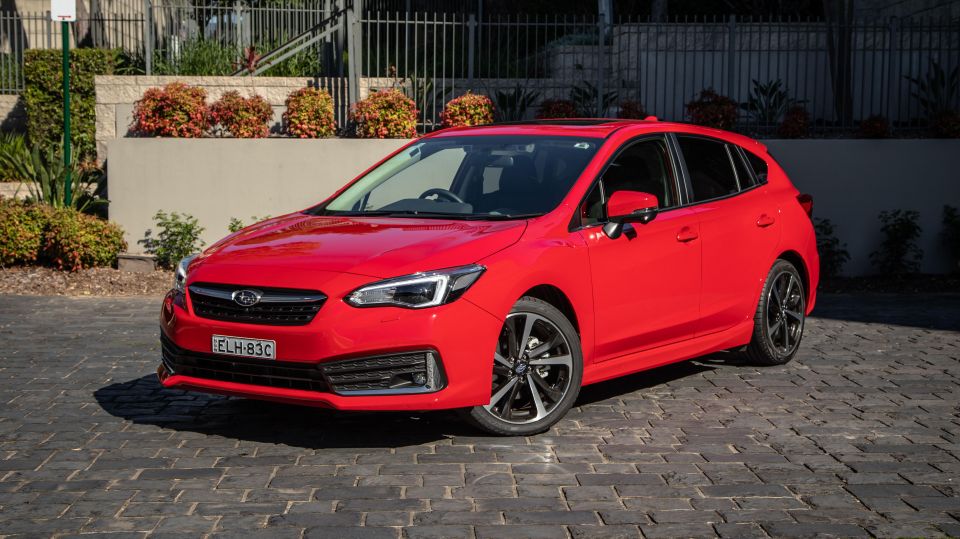
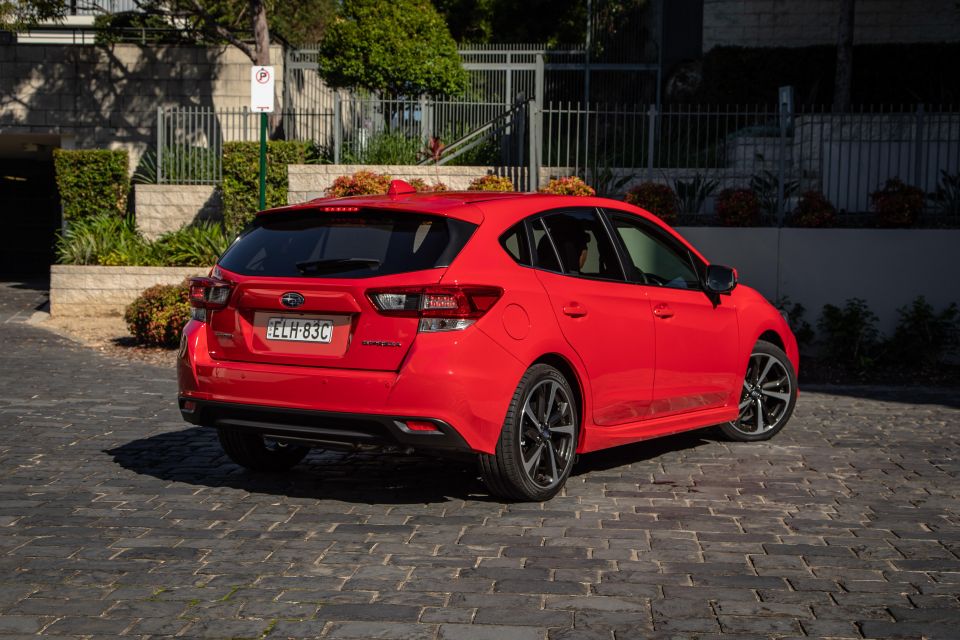

Journalist
New from
$23,740
excl. on-roads

Journalist
New from
$23,740
excl. on-roads


Journalist
New from
$23,740
excl. on-roads

Journalist
New from
$23,740
excl. on-roads
Quickly see how this car stacks up against its competition. Select any benchmark to see more details.
Where expert car reviews meet expert car buying – CarExpert gives you trusted advice, personalised service and real savings on your next new car.
You win some and you lose some, or so the fortunes of Subaru’s small cars seem to appear. It doesn’t demand imagination to see the XV crossover has slowed the popularity of the sedan and hatchback range on which it’s based.
Both current, the technically-tied XV and Impreza somewhat unsurprisingly arrived with similar timing back late 2016 and early 2017. But within two years the higher-riding former managed to capture twice as many hearts and wallets as the latter in Australia – sedan and hatch combined.
It’s a sobering example of where consumer tastes are heading.

That doesn’t necessarily make the familiar Subaru Impreza a bad thing. It’s just that a good swathe of the rest of the Subaru range has been refreshed, revised and hybrid-ised to maintain a nice sprinkle of fairy dust, and there hasn’t been much news or newness of note in Impreza-land for the past four years.
Indeed, amongst its own segment competitors, the popularity of both four and five-door versions has lately been modest.
Still, Subaru has long traded on offering exceptional bang for buck, particularly when it comes to stacking equipment levels for a given price point.
The Impreza mightn’t be the freshest or trendiest machine the block, but it would be imprudent not to consider what the current version has to offer – in the case of this review the range-topping 2021 Subaru Impreza 2.0i-S in the hatchback body style.
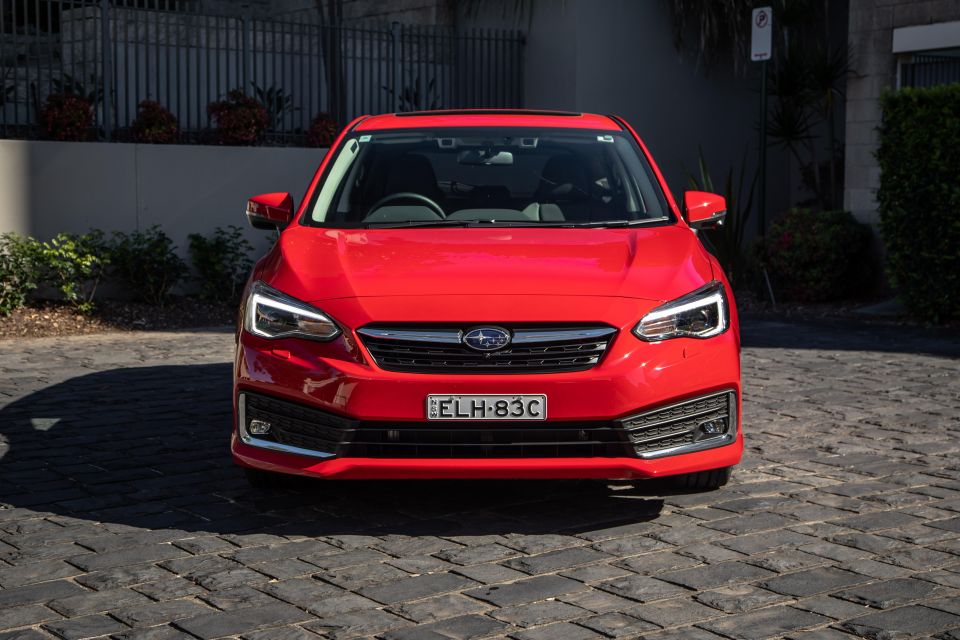
The flagship 2021 Subaru Impreza 2.0i-S Hatch on test lobs for $31,490 before on-road costs. As reported prior, the Impreza range recently copped a modest price rise.
At the time of review, Subaru had no drive-away offers on the Impreza range and expects to the land the S five-door in your driveway for around the $35,440 mark.
The S is the fourth and highest grade of the Impreza range that kicks off at $23,990 before on-road costs for the 2.0i Sedan. Hatch versions command an extra $200 outlay over any four-door variant you consider choosing.
See the full 2021 Subaru Impreza price list below:
All prices exclude on-road costs
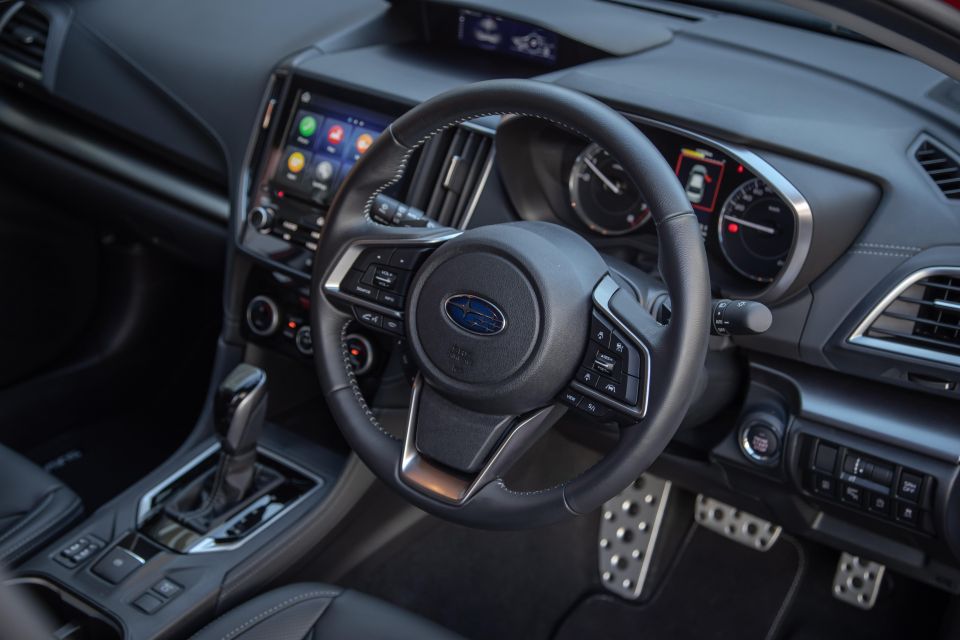
The top-spec Subaru’s price puts it above Hyundai i30 Hatch Elite ($30,220), a little below the crossover-styled Ford Focus Active ($30,490), in the middle of the Mazda 3 pack in the G25 Evolve Hatch ($30,190), and a smidge under the highest-grade Toyota Corolla ZR ($32,695) – all nameplates of which outsell the wider Impreza stable according to current data.
Further, the top-shelf Impreza isn’t that much pricier than the new entry-level Volkswagen Golf 110TSI ($29,350 list).
Another thing to consider, particularly if you have the XV in your crosshairs, is that the related crossover demands a significantly pricier $37,290 price in the same tree-topping S grade.
That’s a formidable $5800 upcharge when you opt for the jacked-up and trendier technical twin.
Priced right? It appears so. And it is the all-wheel drive amongst front-drivers. But, equally, the real value pitch depends largely on what goodies the Impreza 2.0i-S has on offer.

Quite a lot. From reversing AEB to the dual-digital screen cabin format, the top-dog Impreza certainly offers a fulsome fit-out.
Outside, the Subaru Impreza 2.0i-S gets full LED lighting with self-levelling auto headlights, dynamic cornering light functionality, LED fog lights and DRLs, rain-sensing wipers, power-folding and heated mirrors with auto-dipping on the passenger side, a kerb-side camera, rear parking sensors, an electric sunroof, rear privacy glass, and bespoke 18-inch alloy wheels with Yokohama rubber.
Adaptive cruise control is standard. There’s no front parking sensors, though you do get a forward-view monitor instead.
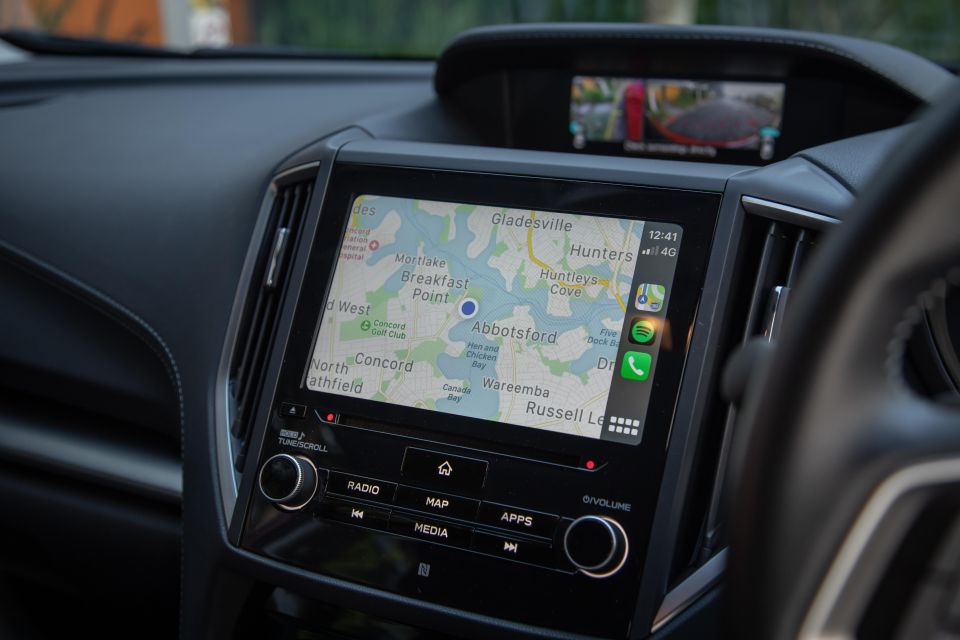
Inside, the flagship fits leather-appointed trim, seat heating, eight-way electric driver seat adjustment, keyless go, a paddle-shifter leather wheel, electric park brake, dual-zone climate control, four USB outlets, dual 12V outlets, tyre pressure monitoring and a space saver spare.
The aforementioned dual-screen arrangement stacks a 6.3-inch LCD “Multifunction Display” atop a more conventional 8.0-inch LCD infotainment touchscreen system with a reversing camera, proprietary sat-nav, DAB+, Bluetooth, voice command recognition and wired Apple CarPlay and Android Auto smartphone mirroring.
Apart from the choice of six exterior colours much of the Impreza range gives you a choice of black or ivory coloured interior trim. Nice.
Fully loaded? On paper it appears to have a lot going for it, inside and out.
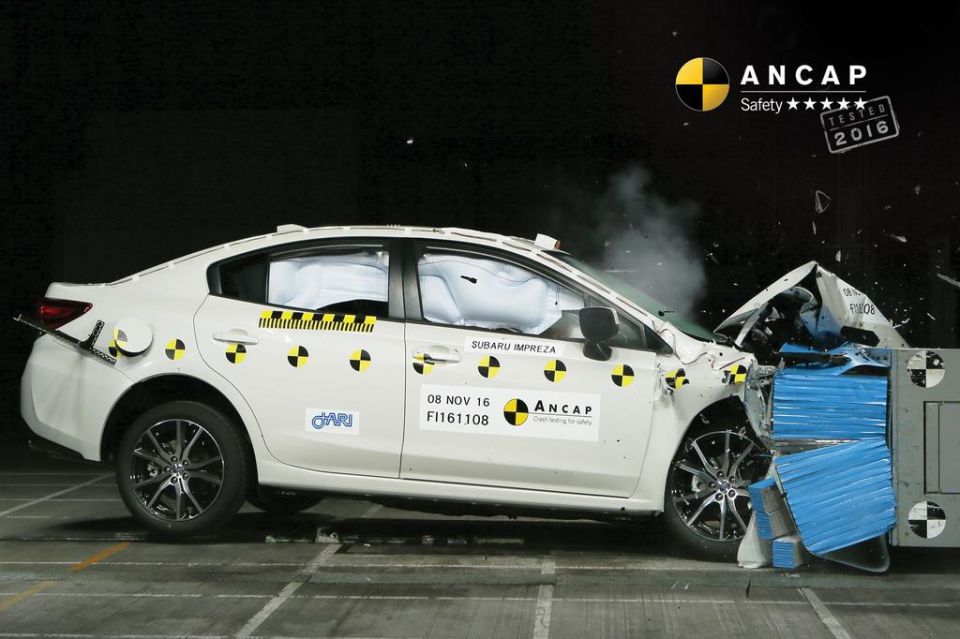
The Impreza range has a five-star ANCAP rating based on tests conducted in 2016.
It scored a commendable 35.80 out of 37 after excellent results for frontal offset (14.80 out of 16), side impact (16 out of 16), and Good ratings for whiplash and pedestrian protection.
Beyond the seven airbag fit-out – front, front side, curtain and driver’s knee – there’s a fair bit to unpack in what Subaru markets as EyeSight Driver Assist and Vision Assist.

Under the EyeSight Driver banner, the Impreza 2.0i-S features all-speed autonomous emergency braking, forward collision warning, brake light recognition, lane departure warning and sway warning, lane-keep assist and lead vehicle start alert (when traffic ahead moves off from stationary).
Separately, the Vision Assist bundle brings with it blind-spot monitoring, front view monitoring, lane change assist, rear-cross traffic alert and the aforementioned reverse AEB and kerb-side camera systems.
The Impreza also has ISOFIX anchor points for the outboard rear seating as well as three conventional tether points.
Worth reiteration under the safety banner is the permanent all-wheel drive as well as the quality tyre spec and advanced LED-based forward lighting tech incorporated into the top-shelf variant, making for the safest iteration of the Subaru small-car breed.
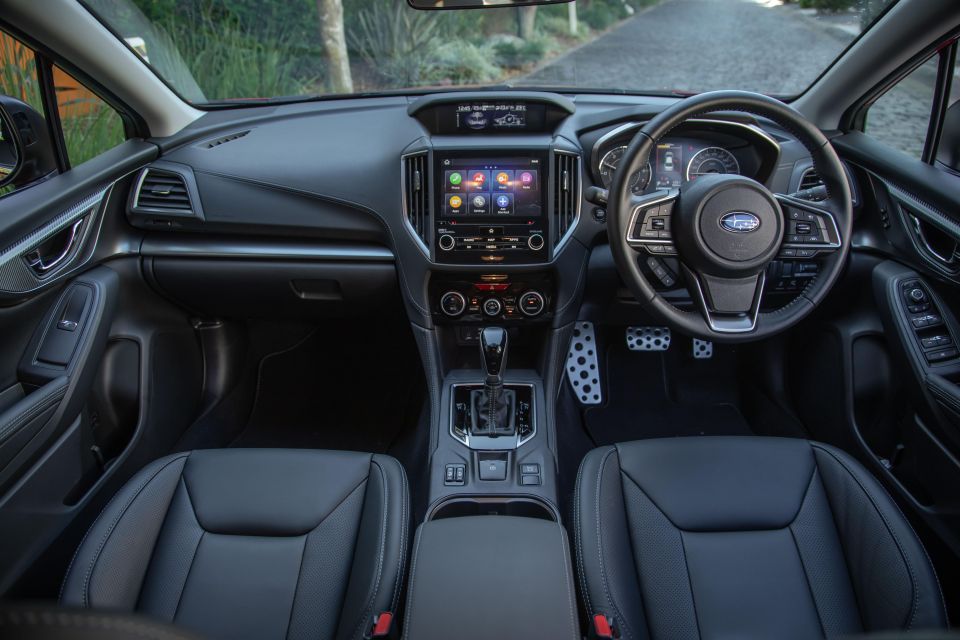
The cabin lays on the feel-good features. There’s lots of screens, buttons, texture changes; you feel like it piles on a lot stuff for your dough.
The success of execution hinges largely on how you measure it. For instance, it’s quite an interesting cabin design, if one that looks dated against some segment rivals. Meanwhile, you get lots of buttons and switches to play with, though whether that’s good or bad in an era of increasingly minimalist design trends, is a matter of taste.
The chunky wheel has 17 different controls not counting the paddle-shifters, which typifies Subaru’s intrinsically retro-Japanese approach that more is more, even if it takes some investment for it all to become intuitive.
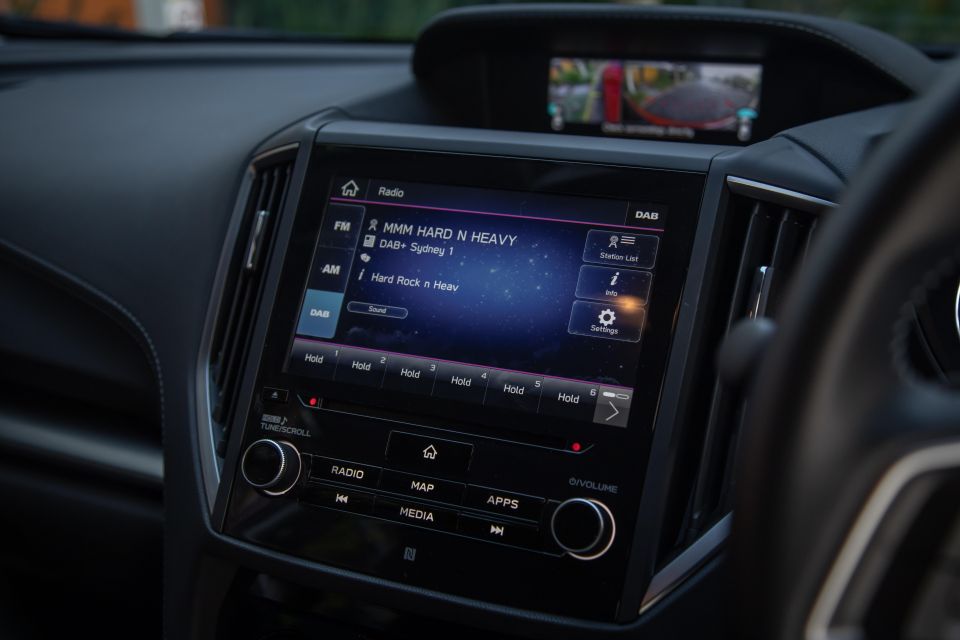
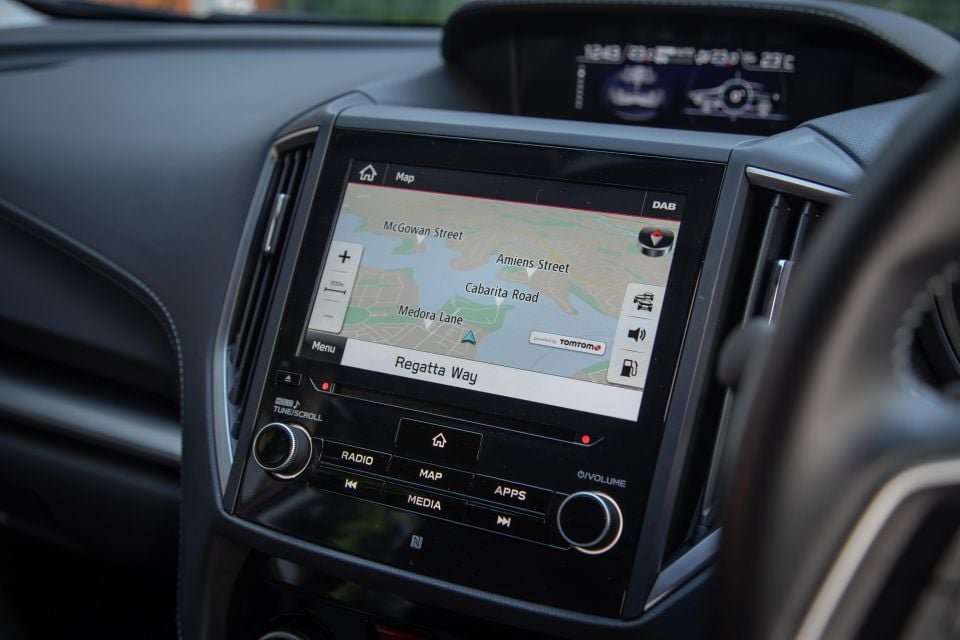

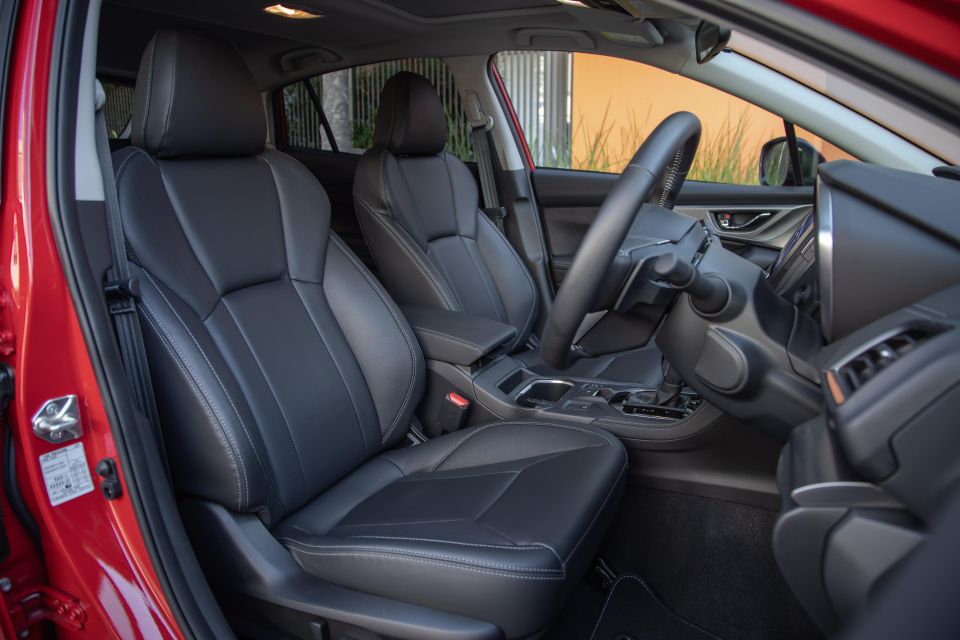
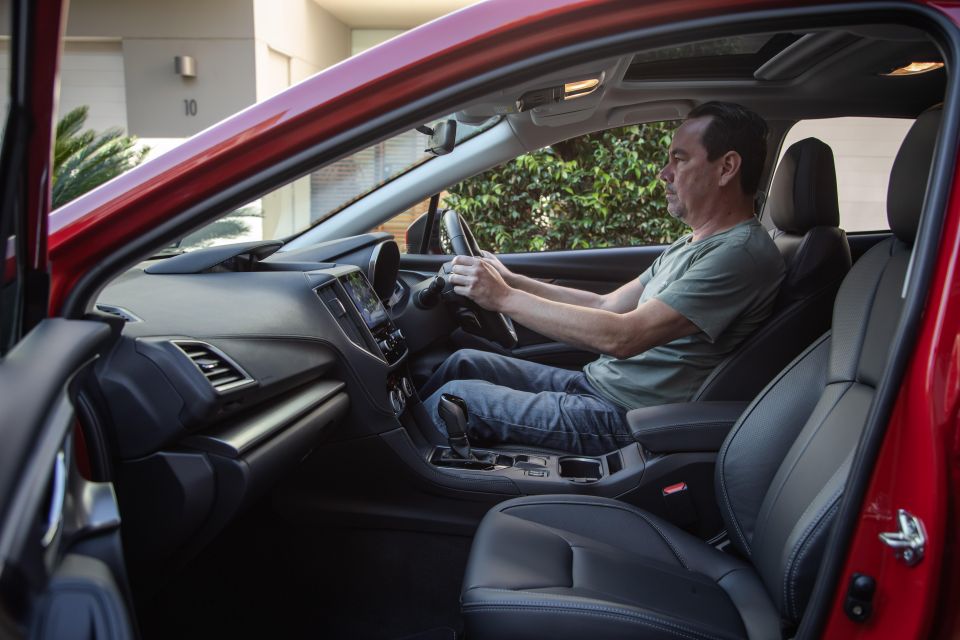
Indeed, the whole cabin is a visual assault that might’ve otherwise seemed more resolved had the look of the screen skins and fonts been a little more cohesive. The point? A lot of stuff is good, if it makes sense and is easy to use.
The seats looks great and feel nice, even if the faux leather trim sections are a touch slippery. There’s a huge degree of driver’s seat adjustment, which is ideal given the footwell and pedals are set so shallow. Something of Subaru quirk, adjustment for ample legroom leaves the dash fascia controls and touchscreens a little further away than arm’s length.
The triple-screen arrangement makes for a bit of eye candy though quite why there’s no uniformity in design between them is a head-scratcher. I do like the secondary display screen, even if its primary usefulness is in displaying climate control temperature, though it does display the kerb-side camera view in its tiny format.
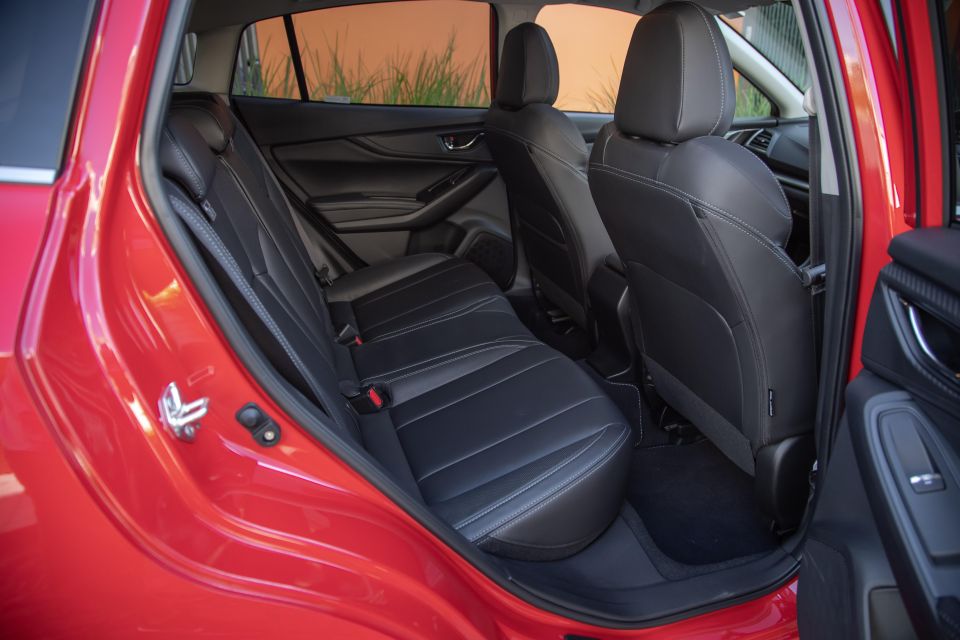
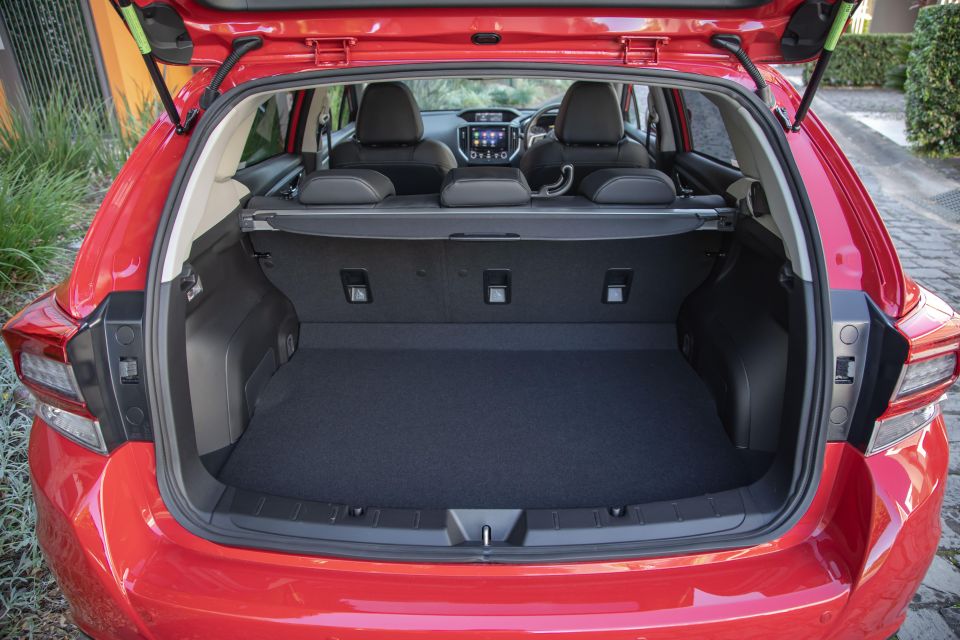
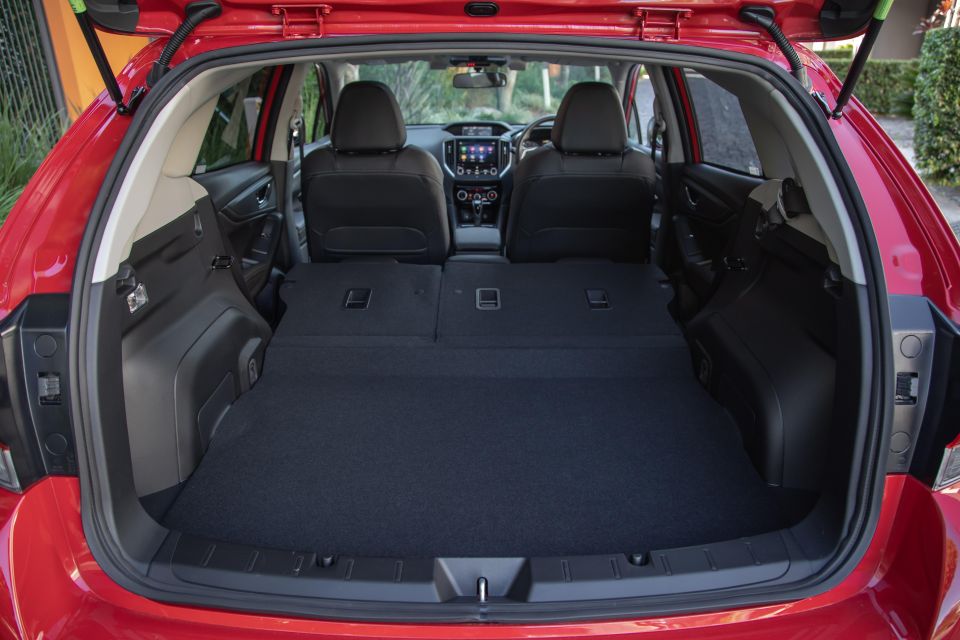
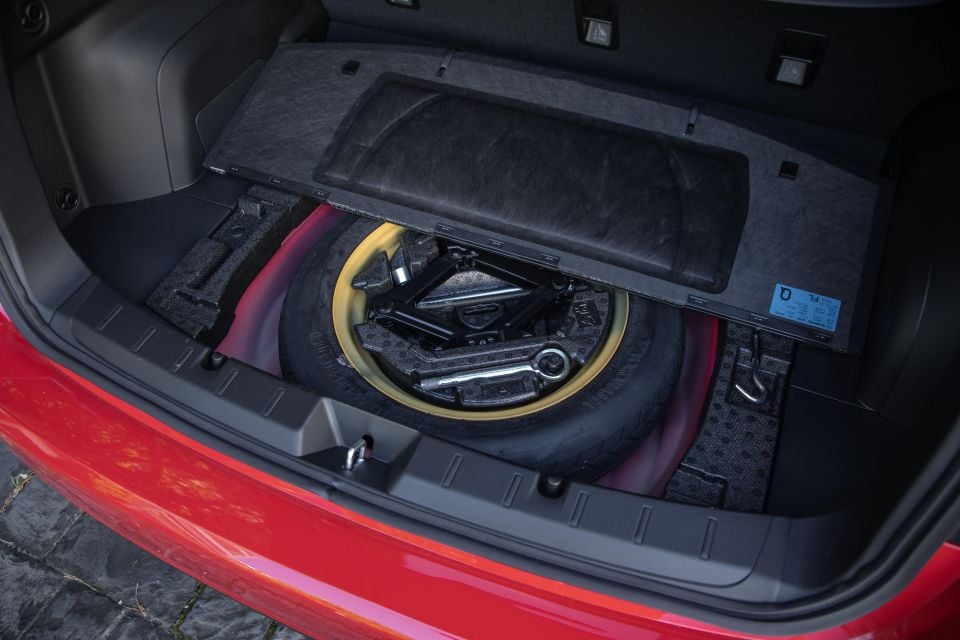
The main touchscreen does look a bit old-hat but functions perfectly fine and offers handy shortcut buttons and dials. It’s a shame the large, adaptive reversing camera resolution is quite grainy.
The four USB outlets are handy – two in a cubby too small for modern phones, two in the console bin – though Subaru decided not to offer convenient device connectivity to passengers in row two, or fit rear air vents for that matter.
Despite the absence of second row creature comforts outside of door bins and cup-holders in the folding armrest, it’s a pleasant place to spend time with generous enough knee, head and elbowroom. The high-set window line might make it tough for younger passengers to see out of, but it’s not necessarily a deal breaker.
The boot is nice and wide and the hatch aperture is huge, with a decent if unremarkable 345 litres available. If luggage space is a priority, the sedan offers a superior 460L, though the hatch’s 40:60-split fold rear seats do liberate 795L total.

Subaru offers a one-size-fits-all powertrain for the entire Impreza range, albeit with a twist for the 2.0i-S version.
Power comes courtesy of the evergreen naturally-aspirated direct-injected 2.0-litre ‘boxer’ four, offering a fairly modest 115kW at 6000rpm and 196Nm way up at 4000rpm.
It’s paired with continuously-variable transmission with six ‘steps’, or faux gearshifts, in Manual mode.
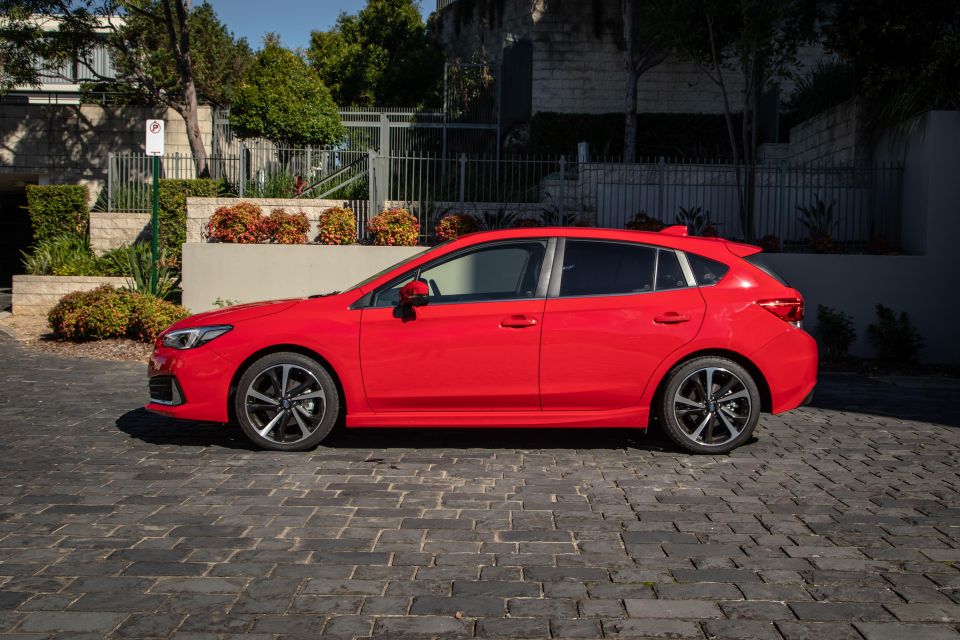
The standard all-wheel drive system offers active fore-aft torque split, but the 2.0i-S exclusively has Active Torque Vectoring smarts across the rear axle. The whole powertrain is paired Si-Drive, which offers two different drive modes.
Be it the fulsome equipment level that tips the scale a little harder in S form (1398kg tare), the tyre spec, the torque vectoring smarts, or the net combined effect, the flagship Impreza returns a 7.2L/100km combined consumption claim some 0.6L thirstier than any other variant in range.
It’s also a half-litre thirstier for urban (9.1L/100km) and extra urban (6.1L/100km) stats.
The good news is on a fairly long combined testing cycle the Impreza 2.0i-S returned consumption impressively close to its claim. Just as nice is that it’ll run on regular 91RON fuel in its 50-litretank.
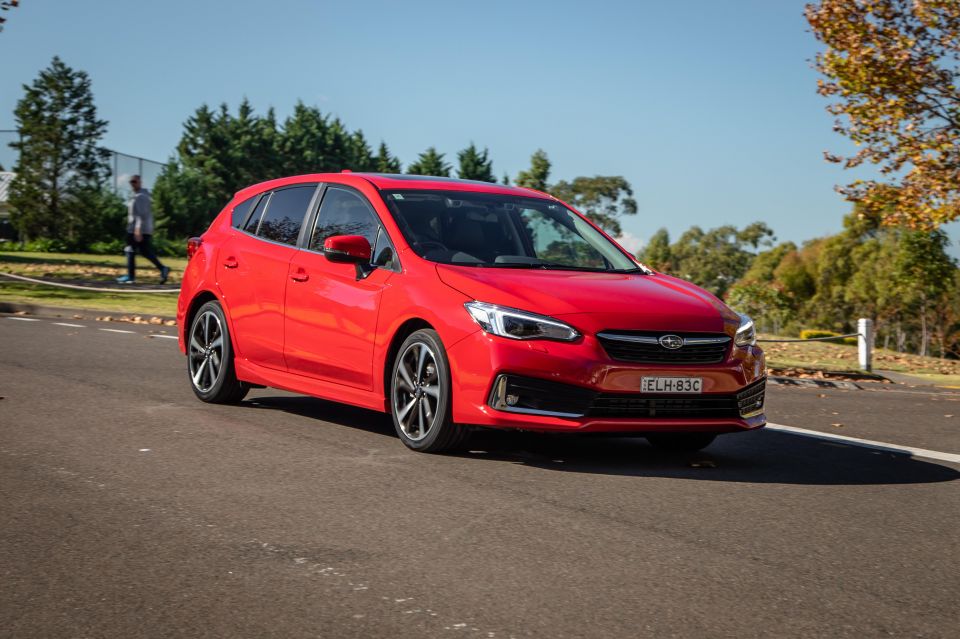
Where expert car reviews meet expert car buying – CarExpert gives you trusted advice, personalised service and real savings on your next new car.
A Subaru hallmark is natural dynamic balance and this generation of Impreza, which arrived with an all-new platform, certainly brings a fundamentally decent driving experience.
On the move, the body control is a little floaty at times but the primary ride quality is quite good even it does strangely become a little terse across harder hits and speed humps.
Generally, the hatch strikes a pleasing balance that’s comfortable and competent, offering a keen enough connection to the road while neatly sidestepping any sort of overly sporty pretensions apart from, perhaps, the steering.
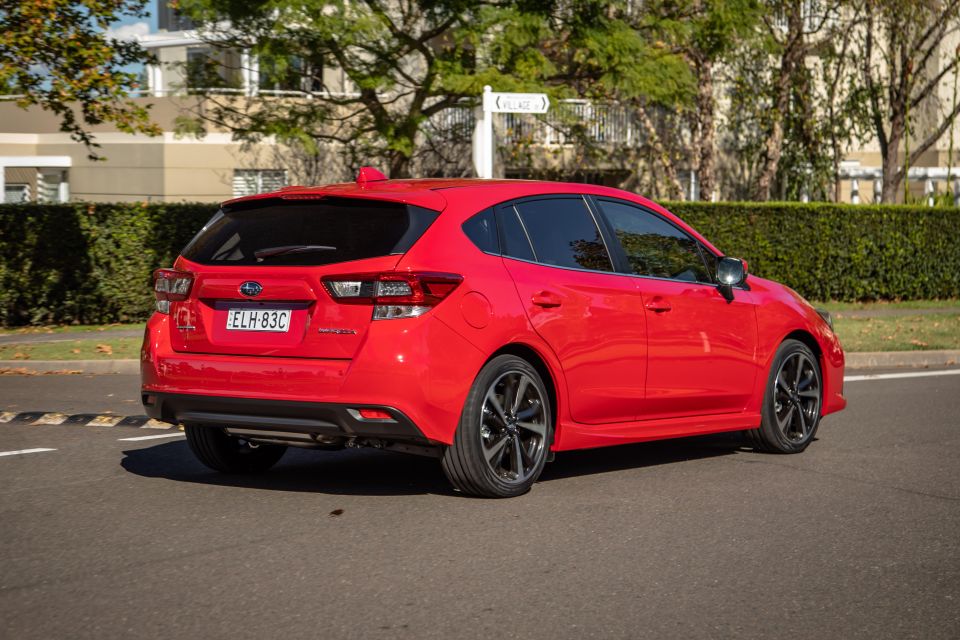
It’s an electric system that somehow manages to feel like an old-school hydraulic design, such is its slightly lumbering weight. That said, it points confidently and responds to the driver’s whims well enough.
Subaru remains faithful to the naturally-aspirated boxer and CVT transmission format, and the current iteration is fairly workmanlike in character, bringing its own quirks while offering the sort of energy that’s fairly commonplace in the non-sporty small-car set.
At cold start these boxer engines still buzz away at a high idle, but it returns crisp throttle response and is flexible enough to remain quiet and composed at a modest clip around town or on the open road. But dig in and the engine does start to sound gruff as it needs to climb high in the rev range, to 4000rpm, to pluck its torque peak.
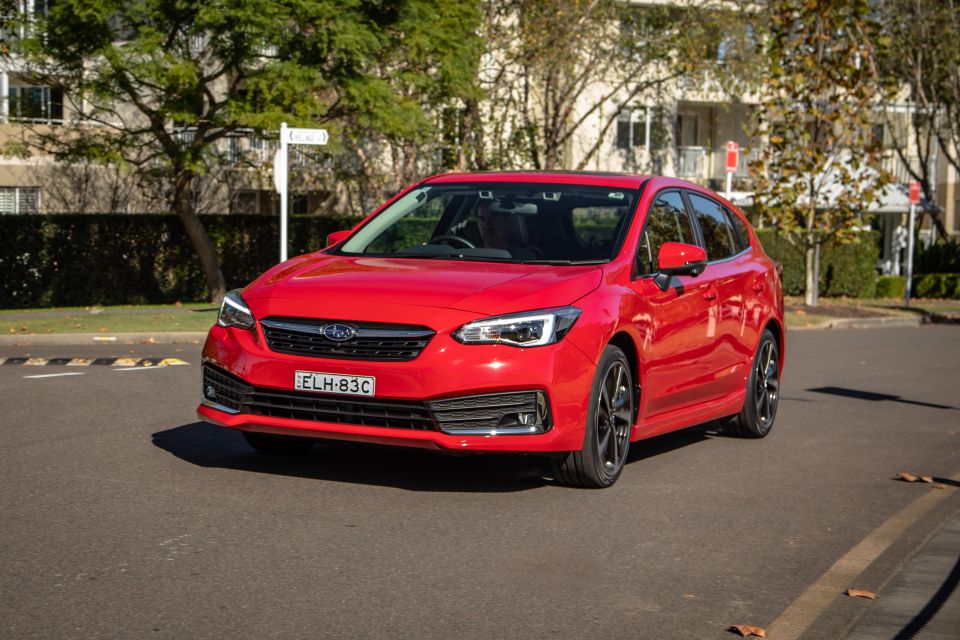
In fact, it doesn’t really encourage enthusiastic driving because there’s not much extra enthusiasm returned when you use a heavy right foot. More noise, perhaps, if only marginally brisker progress. No foul if you believe power – or more to the point, torque – isn’t a high priority for your daily commuting needs.
The CVT is fairly cooperative and it seems some effort has been invested in its calibration to avoid the annoying rpm-pinning trait once typical of the design. The fake gearshift ‘steps’ are convincing enough, but where the unit becomes a little flustered is that on a constantly throttle its behaviour isn’t quite as linear as its Lineartronic branding might otherwise suggest.
In short, it’s a decent if unremarkable thing to drive, perfectly fine for many owners and certainly frugal enough if treating the throttle with moderation.
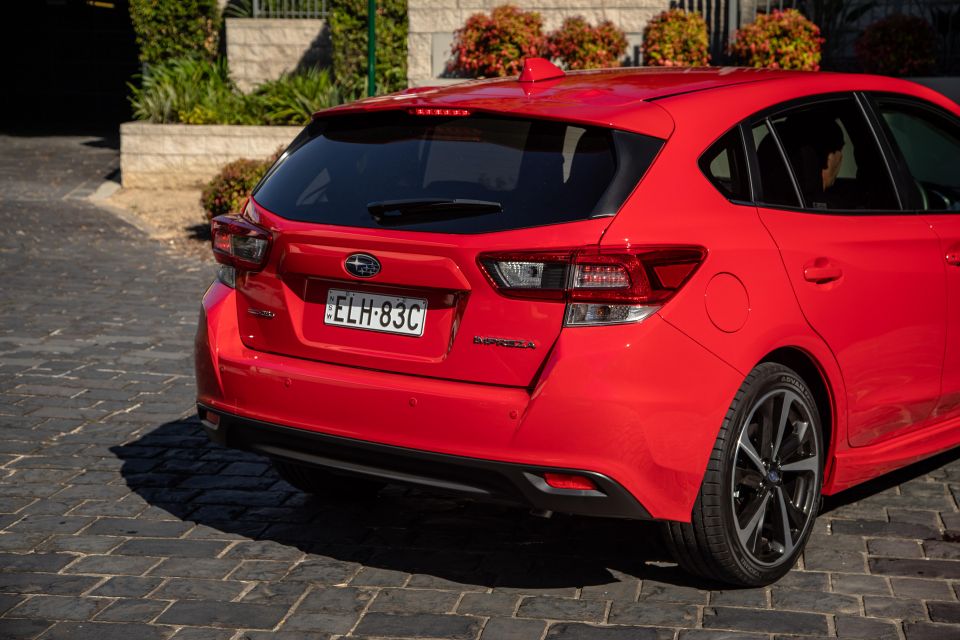
The Impreza range comes with a five-year, unlimited-kilometre factory warranty as well as a capped-priced servicing program for that duration.
Roadside assistance lasts 12 months, or 36 months if you sign up for a Subaru Servicing Plan.
Servicing is every 12 months or 12,500 kilometres, an unusual range cap if of no real detriment compared with the common 15,000km intervals unless you habitually clock up big mileage.
Packages cost $1279.49 for three years or $2430.85 for five years at the time of writing.

The top-spec Impreza will find favour with those after a healthy equipment list and lots of safety as surety, who’s tastes and budgets mightn’t find the popular XV alternative palatable, or who are drawn to all-wheel drive.
As an all-rounder, it delivers a fair and balanced return without being outstanding. And those who like the cut of Subaru’s design jib will probably relish its heavy-handed approach to cabin design and fit-out.
The sweet spot of the range? There’s a fair argument that the grade below, the 2.0i Premium, brings with its most of the goodness you find in the S at a sub-$30k price that makes the Impreza a more compelling value proposition, even if it’s realistically a modest $2700 saving.
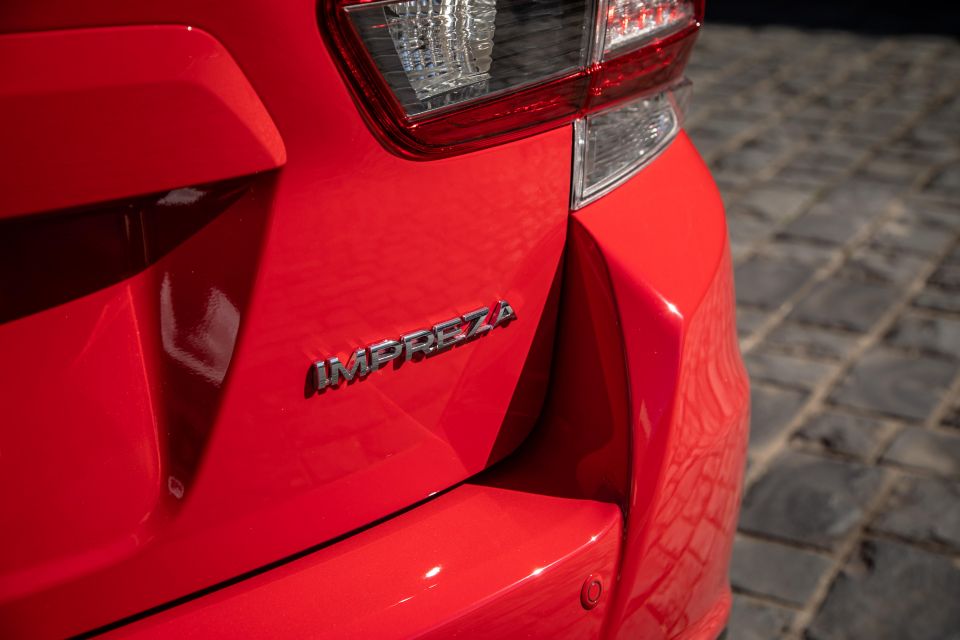
Click the images for the full gallery
Where expert car reviews meet expert car buying – CarExpert gives you trusted advice, personalised service and real savings on your next new car.


Andrew Maclean
5 Days Ago


Shane O'Donoghue
5 Days Ago


Anthony Crawford
4 Days Ago


Matt Campbell
3 Days Ago


James Wong
2 Days Ago
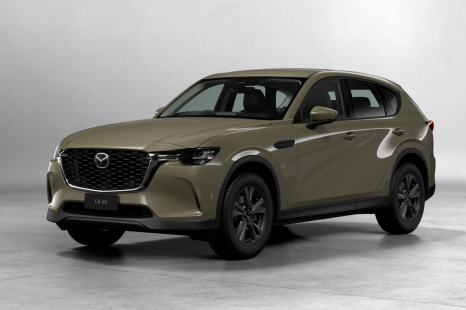

James Wong
3 Hours Ago